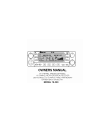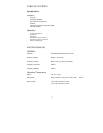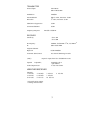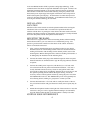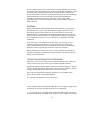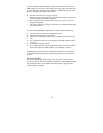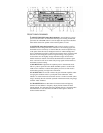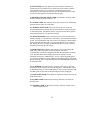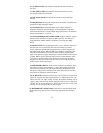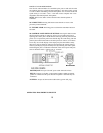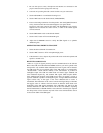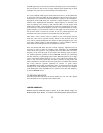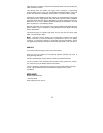11
1. Be sure that power source, microphone and antenna are connected to the
proper connectors before going to the next step.
2. Turn unit on by turning the VOL control clockwise on your transceiver.
3. Set the VOLUME for a comfortable listening level.
4. Set the “BD” button to the desired mode (AM/USB/LSB).
5. Listen to the background noise from the speaker. Turn the SQUELCH control
slowly clockwise until the noise JUST disappears (no signal should
be present). Leave the control at this setting. The SQUELCH is now properly
adjusted. Do not advance the control too far, or some of the weaker signals
will not be heard.
6. Set the CHANNEL switch to the desired channel.
7. Set the “LOC” button off for maximum RF gain.
8. Adjust the CLARIFIER control to clarify the SSB signals or to optimize
AM/WX signals.
OPERATING PROCEDURE TO TRANSMIT
1. Select the desired channel of transmission.
2. Set the “MIC” button to off for microphone high power.
3. If the channel is clear, depress the push-to-talk switch on the microphone and
speak in a normal voice.
RECEIVING SSB SIGNALS
There are 3 types of signals presently used for communications in the Citizens
Band: AM, USB, and LSB. When the MODE switch on your unit is placed in the
AM position, only standard double-sideband, full carrier signals will be detected.
An SSB signal may be recognized while in the AM mode by its characteristic
‘’Donald Duck’’ sound and the inability of the AM detector to produce an
intelligible output. The USB and LSB modes will detect upper sideband and
lower sideband respectively, and standard AM signals. SSB reception differs
from standard AM reception in that SSB receiver does not require a carrier or
opposite sideband to produce an intelligible signal. A single-sideband transmitted
signal consists only of the upper or the lower sideband and no carrier is
transmitted. The elimination of the carrier from the AM signal helps to eliminate
the biggest cause of whistles and tones heard on channels which make even
moderately strong AM signals unreadable. Also, SSB takes only half of an AM
channel, therefore two SSB conversations will fit into each channel, expanding
the 40 AM channels to 80 SSB channels. The reduction in channel space required
also helps in the receiver because only half of the noise and interference can be
received with 100% of the SSB signal.



